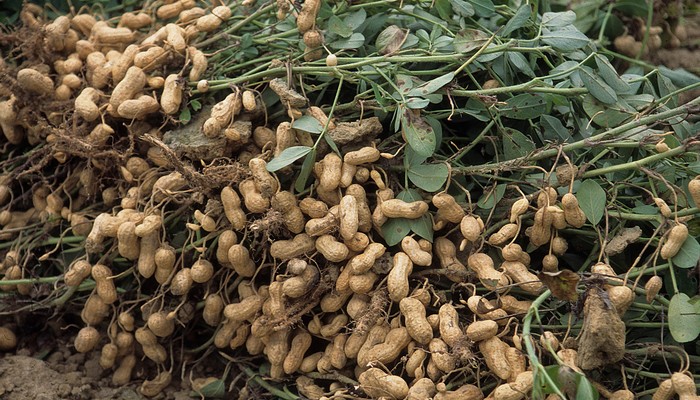Groundnuts and soybeans are a priority grains value chain with highest potential to increase the incomes and impact livelihoods of smallholder farmers in Butere-Mumias, within Kakamega County of western Kenya.
This is according to a survey done by the Kenya Agricultural Productivity Project (KAPP) in the region. Butere-Mumias with a population of 601,796 (Kenya Population Census, 2009) has 71 per cent of land which is arable and groundnut and soybean farming is a potential economic activity in six out of the 10 divisions.
But only 1,200 farm households (52 per cent men and 48 per cent women) cultivated groundnut and soybean, according to a KAPP baseline study. This number was very low compared to 107,444 farm households in the region. The farmers considered grains as second season crops which could not compete with maize as the main enterprise.
The farmers allocated a small size of land, averagely a quarter an acre to the enterprise. For those who cultivated the two crops, they did not even use certified seeds when planting. This is because the seeds were out of reach.
According to the Kenya Plant Health Inspectorate Service (KEPHIS), 60 to 70 per cent of seeds planted by farmers in Kenya come from the informal sector.
Related
Groundnut farmers urged to adopt 4x yielding varieties
This is how to grow and earn millions with groundnuts
Groundnuts earn Mpeketoni farmer Sh320,000 in three months
Inadequate crop husbandry techniques also affected the quality of crop and yields. The farmers also lacked post-harvest handling equipment and value addition techniques. This resulted to postharvest losses amounting to 30 per cent of the total harvest. In most cases, the grains were sold raw and this fetched little money, an average of Sh1,055 per farmer per season.

Groundnut harvesting
Groundnut and soybean was produced by farmers individually and the harvested grain was sold directly to traders in local markets. The prices in these markets fluctuated. Also, the unit of measure before sale was not standardized as traders used ‘gorogoro’ (a tin used to measure grains in western Kenya which is assumed to weigh 2 kilograms).
In response, KAPP, while working with a group of stakeholder including the farmers, implemented a project to address these bottlenecks. The aim was to improve productivity of these grains and farmer incomes.
KAPP collaborated with the Kenya National Farmers Federation to mobilize farmers in 34 locations and arranged for meetings at which TAECONS flagged off the two grains as profitable enterprise. This attracted farmers who were interested to form a common interest group (CIG) in each location.
Farmers were encouraged to consider planting grains during the first season and increasing the size of the land allocated to the two grains. Women and youth were encouraged to engage directly in production or in off-farm activities, for example marketing. A third gender rule applied when electing group leaders at all levels.
As a result of farmer mobilization, 5,145 farmers showed interest in groundnut and soybean production as an enterprise.
A fully operational Butere-Mumias Groundnut/Soya Co-operative Society was formed and formally registered. A total of 3,073 farmers (56.7 per cent of them women and 14 per cent youth) registered with the co-operative by the end of December 2017, and farmers use the co-operative to market their produce as a group. The co-operative set up collection centers in three locations where farmers deliver 18 tonnes of harvested soybean and groundnut.
The collected grains are then taken for processing at the cottage plant at Eshirombe in Khwisero sub-County. This has created several job opportunities including production team leaders, marketers, collection center assistants, drivers and casual laborers.
The co-operative sells 1,500 kg of processed products from the grains every month, earning a profit of Sh105,000.
“I love this enterprise very much. I earned Sh54,000 from the sale of 21 bags of unshelled groundnuts harvested in my one acre farm in just four months in 2017,” said Mr. Tito who is a progressive farmer and a member of Eshirombe location CIG.
Before the KAPP project, he used to harvest three bags of groundnuts from an intercrop of maize for subsistence purposes. He thus keenly followed the trainings and demonstrations and realized tremendous results
In 2016, he got Sh36,000 from selling groundnuts which he used to buy one dairy animal. His plan is to double his production in 2018 by increasing the land size to two acres.
Since he is a member of Butere-Mumias Ground/Soya Co-operative Society he is assured of the market.
“I want to buy a motorbike so that I can a start a ‘bodaboda’ (motorbike) transport business, I also want to open a small shop at Mundeku market for my wife,” he adds.
















Comments powered by CComment